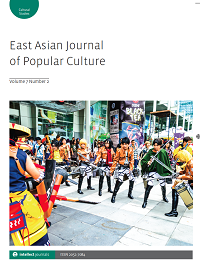
Full text loading...

In this article, I examine the history of audience laughter on Japanese television and its role in producing and sustaining the image of an intimate, family-like public during the medium’s early decades. With a focus on the progressive gendering of audience laughter on Japanese television from the 1960s onwards, I demonstrate how the move to procure female laughter on the medium reflected broader ideological expectations that women and their laughter might unify a family-like, national audience. I argue that Japanese television sought to leverage female laughter – both concretely through paid waraiya ‘laughers’ in the audience and through the gender ideology surrounding laughter – to negotiate television’s foundational tensions between the public and the private. More broadly, I suggest that the history of television laughter and its gendering can throw into relief television’s co-imbrication with discourses on gender, nation and consumption.

Article metrics loading...

Full text loading...
References


Publication Date:
https://doi.org/10.1386/eapc_00077_1 Published content will be available immediately after check-out or when it is released in case of a pre-order. Please make sure to be logged in to see all available purchase options.